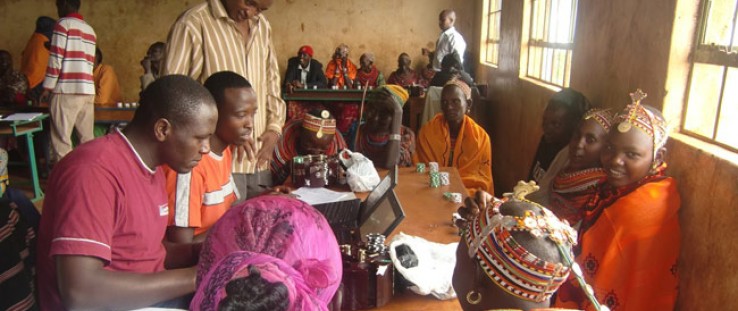 Kenyan pastoralists learn about livestock insurance.
ILRI/IBLI Project
Kenyan pastoralists learn about livestock insurance.
ILRI/IBLI Project
 Kenyan pastoralists learn about livestock insurance.
ILRI/IBLI Project
Kenyan pastoralists learn about livestock insurance.
ILRI/IBLI Project
Ten years ago, few in the development community were discussing risk, let alone developing programming to manage those risks and build resilience. Today, USAID, under the U.S. Government’s Feed the Future and Global Climate Change Initiatives, is supporting a rigorous agenda to better inform policy and programming in the area of risk management, and several Agency missions are integrating insurance into agricultural development and climate change adaptation.
But why pay attention to risk, and what does it have to do with the issues facing the world’s most vulnerable growers and the societies they struggle to feed?
Quite simply, risk can undermine the long-term sustainability of other efforts to pull the most vulnerable from poverty and help societies develop. For the poor, who often live on marginal lands and are dependent on agriculture, risk directly shapes decisions and actions. After a major shock like a drought or flood, the poor lose household assets such as livestock, and find it difficult, if not impossible, to recover. With a changing climate and growing population, these events may not only occur more frequently—their impacts could be even more severe.
Even without a severe weather event that destroys crops, exposure to risk is extremely costly: it keeps people hunkered down in conservative livelihood strategies that are intended to ensure survival, but which end up perpetuating poverty. Fearing that a drought or flood could wipe out their crops, smallholder farmers and pastoralists hesitate to invest in things like better seeds or fertilizer because they worry that, with a greater investment, they face greater losses in bad years.
But this also means that they are foregoing opportunities to increase their yields and their incomes in good years—and thus their ability to withstand future shocks.
Risk also stunts the development of rural financial markets, meaning that even those smallholder farmers and pastoralists who are interested in entering new markets or adopting new technologies will have difficulty getting loans to do so.
Better risk management requires interventions at the household, community and national levels. People, communities and governments need to be able to better assess the risk they face. They need to be able to access and use information that will allow them to better prepare for coming shocks.
At all levels, investments can be made to reduce risk, such as through improved soil and water management, adoption of improved technologies such as drought-resistant crop varieties, and more integrated market systems. At all levels, the capacity to cope with the effects of shocks once they occur can be strengthened. USAID humanitarian and development programming has made, and continues to make, important contributions in many of these areas.
There is, however, another important element in comprehensive risk management that is relatively underdeveloped—private sector financial tools such as insurance.
While insurance is not appropriate for all contexts, nor does it address all risk, it can better enable poor farmers to withstand weather-related shocks, and to take the prudent risks they will need to survive in the long term.
Unfortunately, in most developing countries, agricultural insurance is rarely available. Recognizing the need to address this challenge, in 2004, USAID began to expand the availability of effective insurance products, and has since supported 16 projects in 11 countries across Africa, Asia and Latin America. These efforts aim to reduce barriers to insurance expansion, and to show how insurance can reduce vulnerability and generate more growth.
Considering the challenges of developing insurance products that are both market sustainable and work for developing countries; and considering the limited capacity of local companies to develop appropriate agricultural insurance products, most activities have supported contract design. Working with private sector partners to develop the marketing infrastructure that can support sales and payments to remote areas has also been critical. Activities must also address infrastructure, market and outreach issues associated with this nascent product area. In the Dominican Republic, they are working to help local insurers develop affordable, effective contracts. In East Africa, they are educating farmers and pastoralists who are being offered insurance for the first time. In the Kenyan and Ethiopian dry lands, a platform has been developed to enable the use of mobile phones for sales and payments in very remote areas. In Peru, innovative games were developed to educate smallholders who were being offered insurance for the first time. These games have been adapted for use with smallholders and pastoralists in other countries.
These are just some examples of the Agency’s work to develop and test insurance, and integrate it into broader programming to build resilience, enable climate change adaptation, and stimulate more inclusive agricultural-led growth.







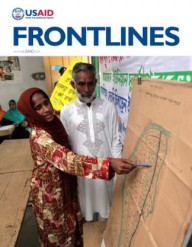

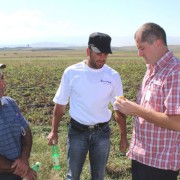
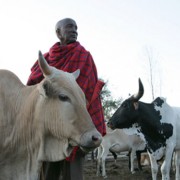
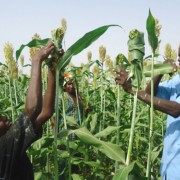
Comment
Make a general inquiry or suggest an improvement.